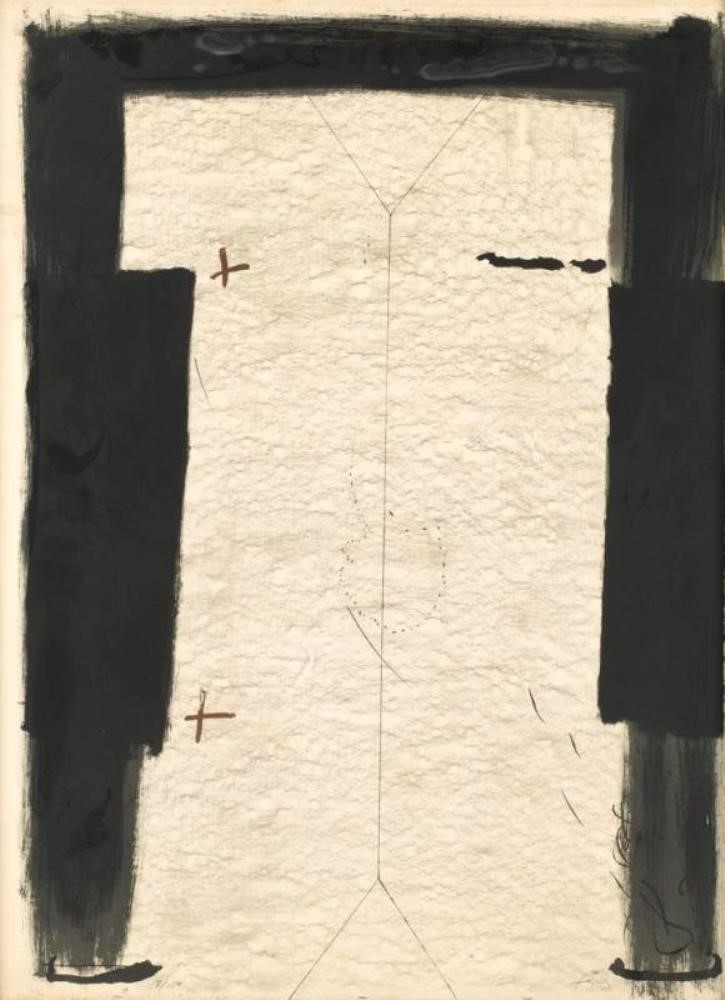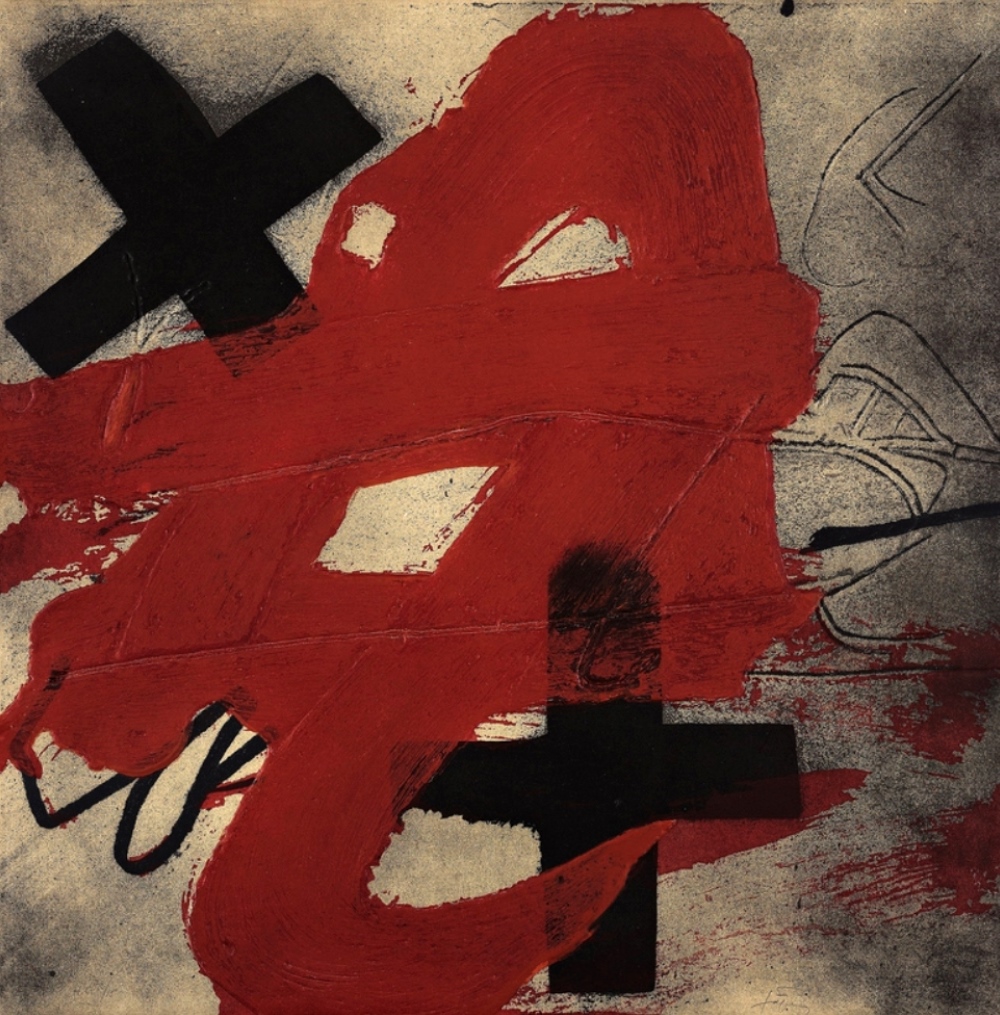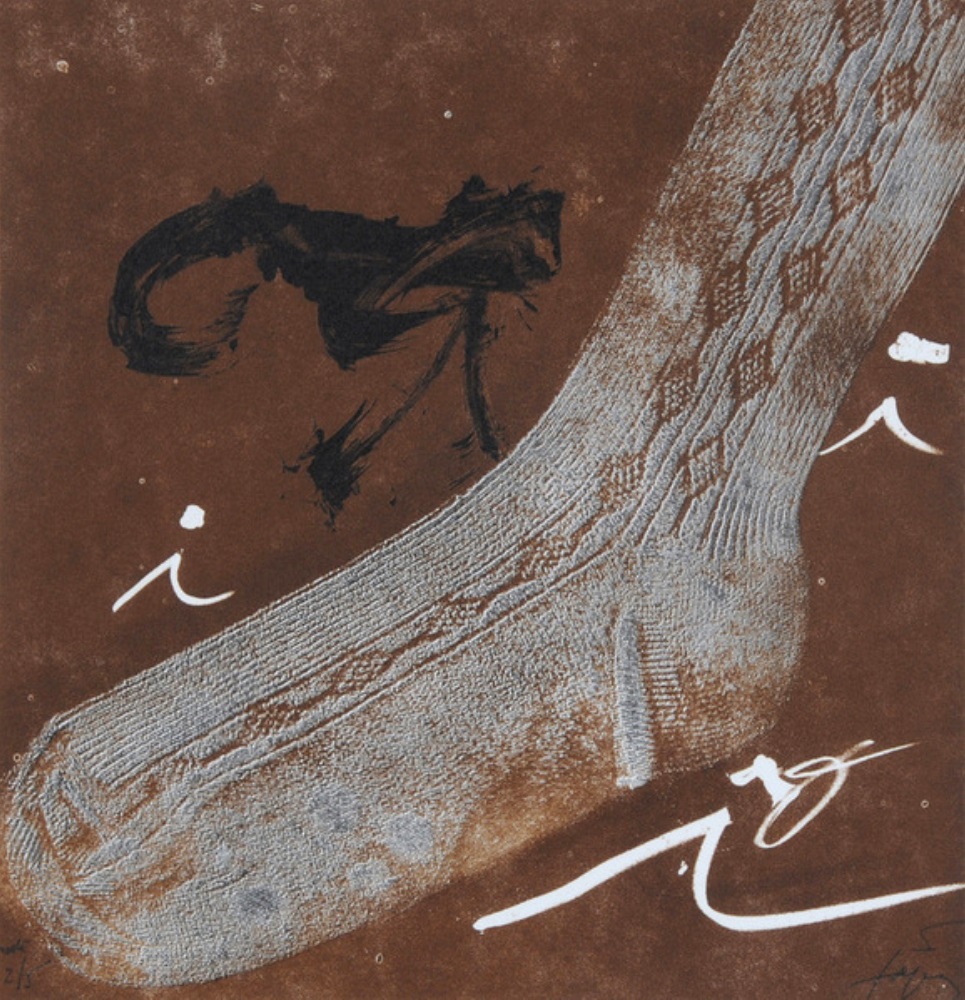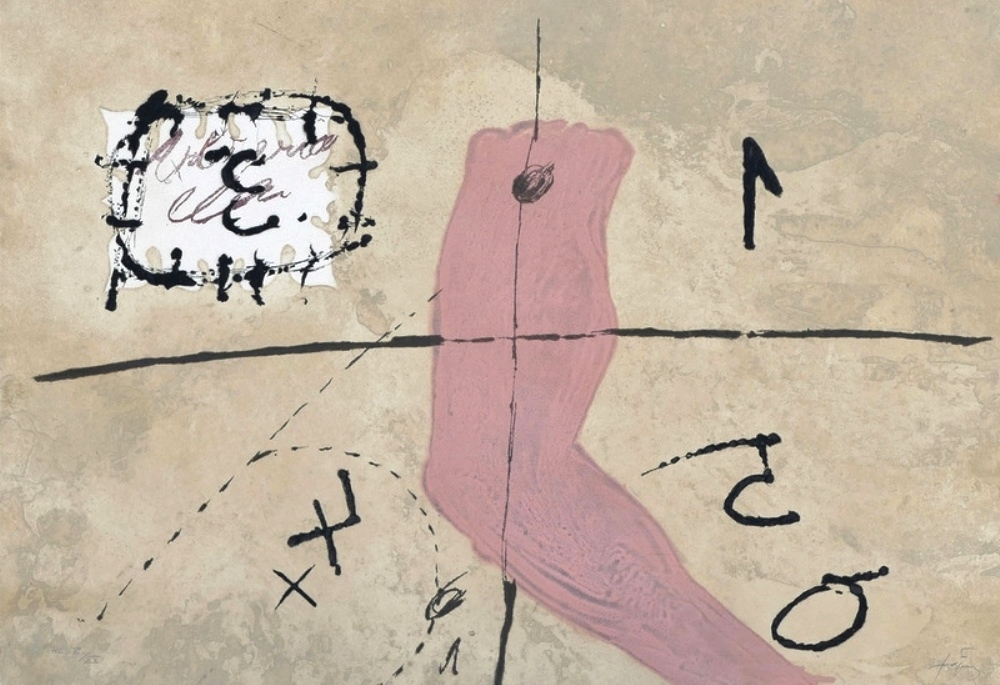Antoni Tàpies i Puig, 1st Marquess of Tàpies; born on 13 December 1923 and died on 6 February 2012; He was a Spanish painter, sculptor and art theorist, who became one of the most famous European artists of his generation.
The son of Josep Tàpies i Mestre and Maria Puig i Guerra, Antoni Tàpies Puig was born in Barcelona on 13 December 1923. His father was a lawyer and Catalan nationalist who served briefly with the Republican government.
Due to this, Tàpies grew up in an environment where he was very much exposed to cultural and social experiences of leaders in the Catalan public life and its republicanism. His maternal grandmother also exposed him to this world with her great involvement in civil and political activities. Tàpies was first introduced to contemporary art as he entered secondary school in 1934. He saw a famous Christmas issue of the magazine, D’ací i d’allà, which contained reproductions of works by artists such as Duchamp, Braque, Kandinsky, and Picasso.
At 17, Tàpies suffered a near-fatal heart attack caused by tuberculosis. He spent two years as a convalescent in the mountains, reading widely and pursuing an interest in art that had already expressed itself when he was in his early teens.
Tàpies studied at the German School of Barcelona. After studying law for 3 years, he devoted himself from 1943 onwards only to his painting.
In 1945 Tàpies began experimenting with more rinse materials. He would mix oil paint with whiting. At this time he also became increasingly interested in philosophy especially that of Sartre as well as Eastern thought. He became known as one of Spain’s most renowned artists in the second half of the 20th century. His abstract and avant-garde works were displayed in many major museums all over the world.
Throughout the span of his life Antoni Tàpies has been associated with a number of movements such as Art Informel and Haute Pâte or Matter Painting. He became a part of the avant-garde group Dau al Set in 1948, which was a group that had strong ties to Surrealism. Early works of his were surrealistic, but in 1953 he began working in abstract art.
It is here that he becomes a part of the Art Informel movement and starts working with mixed media. Art Informel in Europe was the equivalent to Abstract Expressionism in America. This was among the most prevalent styles of art in post-war Europe. Within this movement is the category of Matter Painting. Its focus on the use of odd objects completely undermines the acts of traditional fine art. Some of Tàpies’s most famous and original works fall within this genre. They are characterized by his use of marble dust and clay that he mixed with his paints as well as the incorporation of found objects such as string, paper, and cloth. In the late 1960’s into the early 1970’s Tàpies began to be influenced by the movement of Pop Art. Because of this he began using larger items, such as pieces of furniture, in his works.
Tàpies was perhaps the best-known Catalan artist to emerge in the period since the Second World War. He first came into contact with contemporary art as a teenager through the magazine D’Ací i D’Allà, published in Barcelona, and during the Spanish Civil War (1936–1939), while he was still at school, he taught himself to draw and paint. On a French government scholarship in the early 1950s he lived in Paris, to which he often returned. Both in Europe and beyond, the highly influential French critic and curator Michel Tapié enthusiastically promoted the work of Antoni Tàpies.
In 1948, Tàpies helped co-found the first Post-War Movement in Spain known as Dau al Set which was connected to the Surrealist and Dadaist Movements. The main leader and founder of Dau al Set was the poet Joan Brossa. The movement also had a publication of the same name, Dau al Set. Tàpies started as a surrealist painter, his early works were influenced by Paul Klee and Joan Miró; but soon become an informal artist, working in a style known as pintura matèrica, in which non artistic materials are incorporated into the paintings. In 1953 he began working in mixed media; this is considered his most original contribution to art. One of the first to create serious art in this way, he added clay and marble dust to his paint and used waste paper, string, and rags (Grey and Green Painting, Tate Gallery, London, 1957). Canvas Burned to Matter from c. 1960, in the collection of the Honolulu Museum of Art, is an example of the artist’s mixed media assemblages that combine the principles of Dada and Surrealism.
Tàpies’ international reputation was well established by the end of the 1950s. From the late 1950s to early 1960s, Tàpies worked with Enrique Tábara, Antonio Saura, Manolo Millares and many other Spanish Informalist artists. In 1966 he was arrested at a clandestine assembly at the University of Barcelona; his work of the early 1970s is marked by symbols of Catalan identity (which was anathema to Franco).
*In 1974 he made a series of lithographs called Assassins and displayed them in the Galerie Maeght in Paris, in honour of regime critic Salvador Puig Antich’s memory.* From about 1970 (influenced by Pop art) he began incorporating more substantial objects into his paintings, such as parts of furniture. Tàpies’s ideas have had worldwide influence on art, especially in the realms of painting, sculpture, etchings and lithography. Examples of his work are found in numerous major international collections. His work is associated with both Tachisme and Abstract Expressionism.
The paintings produced by Tàpies, later in the 1970s and in the 1980s, reveal his application of this aesthetic of meditative emptiness, for example in spray-painted canvases with linear elements suggestive of Oriental calligraphy, in mixed-media paintings that extended the vocabulary of Art informel, and in his oblique allusions to imagery within a fundamentally abstract idiom, as in Imprint of a Basket on Cloth (1980). Among the artists’ work linked in style to that of Tàpies is that of the American painter Julian Schnabel as both have been connected to the art term “Matter”.
Alongside his production of pictures and objects, from 1947 onward Tàpies was active in the field of graphic work. He produced a large number of collector’s books and dossiers in close association with poets and writers such as Alberti, Bonnefoy, Du Bouchet, Brodsky, Brossa, Daive, Dupin, Foix, Frémon, Gimferrer, Guillén, Jabès, Mestres Quadreny, Mitscherlich, Paz, Saramago, Takiguchi, Ullán, Valente and Zambrano.
*In Tàpies’s graphic work, he is interested with the materiality of a piece. He gravitates toward avoiding traditional processes and uses everyday imagery such as handprints and footprints as his subject matter. Tàpies enjoyed working with the concepts such as “high” art and “low” art. He uses embossing, flocking, and indentations with carborundum to help in defining the flatness of printmaking. He involves much painting, drawing, and collage in his prints as well as a number of earthy materials such as straw, sand, and dirt. To achieve the innovative techniques, Tàpies worked with specific publishers and printmakers who were inspired by his unique, groundbreaking ideas. His primary publishers are La Polígrafa in Barcelona, Erker-Presse in St. Gallen, and Galerie Maeght in Paris, Zurich and Barcelona. It was very important to Tàpies for his work to reach a wider range of people. His graphic work was therefore quite important to him in this aspect.*
Tàpies has written essays which have been collected in a series of publications, some translated into different languages: La pràctica de l’art (1970), L’art contra l’estètica, (1974), Memòria personal (1978), La realitat com a art (1982), Per un art modern i progressista (1985), Valor de l’art (1993) and L’art i els seus llocs (1999). These works include Tàpies reflecting on things such as art, life, and politics. He also discusses the social role of art and the artist, reflects on the influences of his work, and explains his artistic as well as political views.
In 1954 Tàpies married Teresa Barba Fabregas. Together they had three children Antoni, Miguel and Clara. He lived mainly in Barcelona and was represented by the Galerie Lelong in Paris and the Pace Gallery in New York. Tàpies died on 6 February 2012. His health had been suffering since 2000.
#biography Wikipedia




